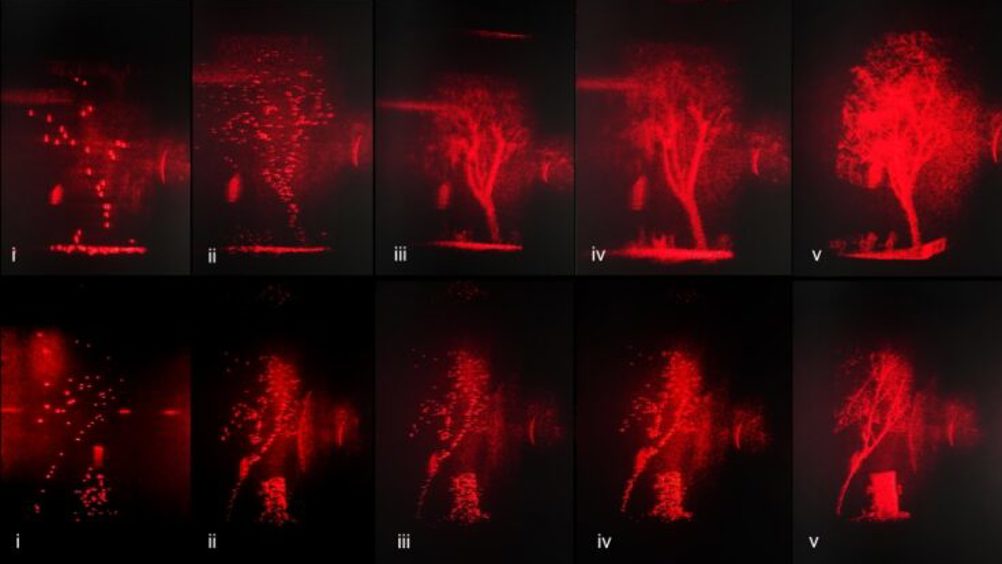Hologram HUD lets drivers ‘see through’ hazards
UK researchers are developing a heads-up display (HUD) for drivers that uses 3D holograms to represent hazards and road signs which are obstructed from view.

The system collects data via LiDAR and then uses an augmented reality holographic point cloud video projection system to display images aligned with real-life objects in size and distance. Unlike other HUD technologies, it’s claimed the holographic projections allow drivers to keep their attention on the road rather than the windscreen. The research is published in Advanced Optical Materials.
“The idea behind a head-up display is that it keeps the driver’s eyes up, because even a fraction of a second not looking at the road is enough time for a crash to happen,” said Jana Skirnewskaja, a doctoral student at Cambridge University’s Department of Engineering, who led the study.
“However, because these are two-dimensional images, projected onto a small area of the windscreen, the driver can be looking at the image, and not at the road ahead of them.”
The system was tested by scanning Malet Street on the University College London campus in central London. Information from the LiDAR point cloud was transformed into layered 3D holograms, consisting of as many as 400,000 data points. Importantly, the team was able to refine the scanning process so that the holograms were generated and projected in real-time, meaning dynamic information on changing busy streets could be accurately displayed.
Register now to continue reading
Thanks for visiting The Engineer. You’ve now reached your monthly limit of news stories. Register for free to unlock unlimited access to all of our news coverage, as well as premium content including opinion, in-depth features and special reports.
Benefits of registering
-
In-depth insights and coverage of key emerging trends
-
Unrestricted access to special reports throughout the year
-
Daily technology news delivered straight to your inbox










Water Sector Talent Exodus Could Cripple The Sector
Maybe if things are essential for the running of a country and we want to pay a fair price we should be running these utilities on a not for profit...